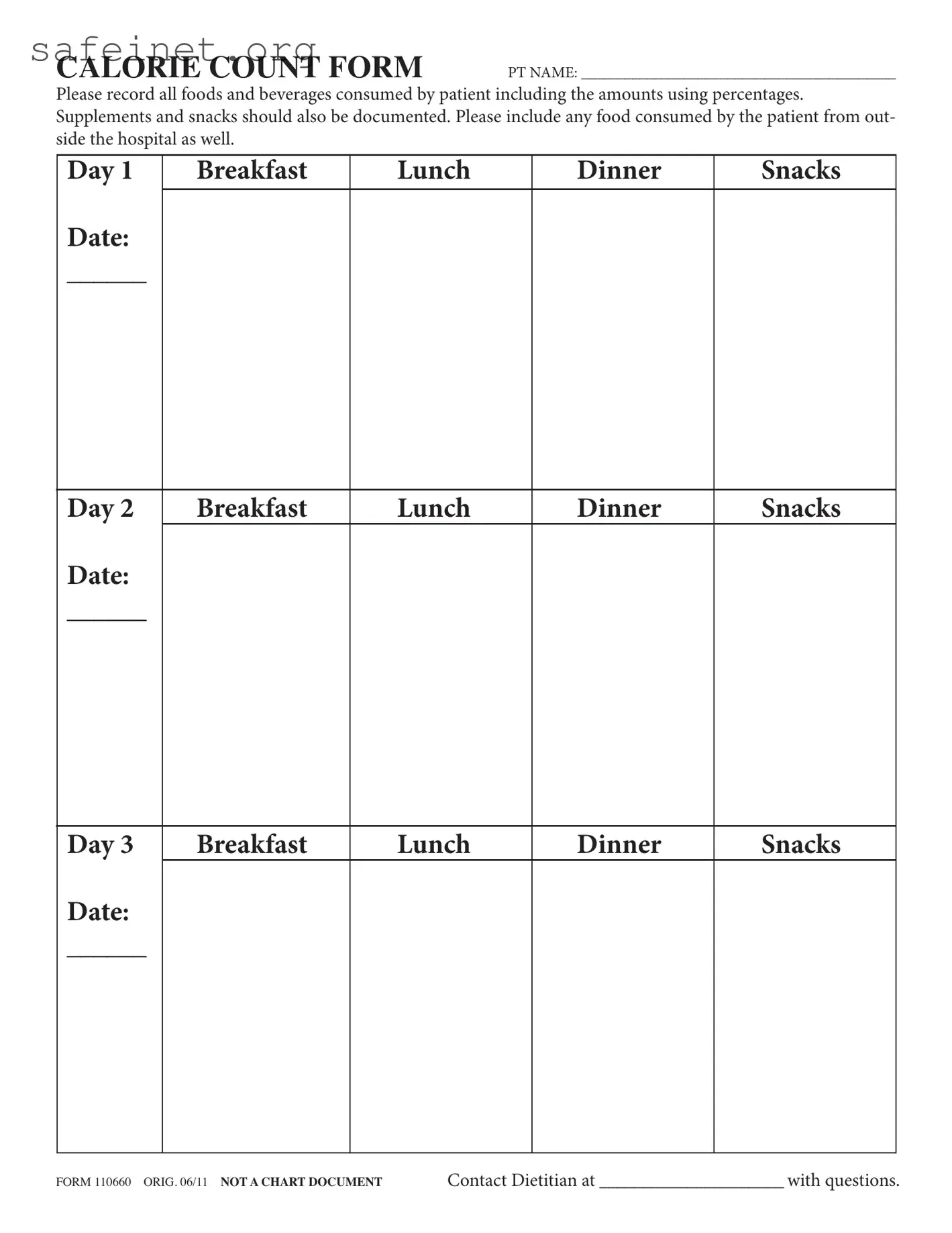The Food Diary is similar to the Calorie Count form in its primary function of tracking daily food intake. Both documents require users to record various details about the foods and beverages consumed throughout the day. The Food Diary emphasizes portions and nutritional content, which can help healthcare professionals assess dietary habits. Regular use of the Food Diary supports an ongoing dialogue between patients and dietitians regarding nutritional health, akin to the insights one gains from the Calorie Count form.
The Dietary Recall form also mirrors the Calorie Count form in capturing information about an individual's dietary intake. While the Calorie Count form focuses on a more structured daily intake over specified meal times, the Dietary Recall form gathers a retrospective account, relying on the patient’s memory of what they consumed in the past 24 hours. This retrospective data, similar to the proactive logging required by the Calorie Count, enables dietitians to evaluate patients’ nutritional patterns and discrepancies effectively.
The Nutrition Assessment form serves a broader purpose, paralleling the Calorie Count's goal of understanding a patient's dietary habits. This document incorporates not only food intake but also factors such as medical history, lifestyle choices, and physical assessment results. Both forms function as tools for healthcare providers to gather comprehensive information about a patient's nutritional status, although the Nutrition Assessment form looks at a wider array of influencing factors.
The Meal Plan form aligns closely with the Calorie Count form by establishing a structure for food consumption. While the Calorie Count tracks what individuals actually eat, the Meal Plan is proactive, detailing what patients should eat over a designated period. This forward-looking format allows healthcare providers to prescribe specific dietary strategies tailored to the needs of patients, facilitating a more structured approach to nutrition care.
The Food and Beverage Order form, often used in hospitals, resembles the Calorie Count form by documenting specific items consumed. This form typically includes set menus or options available to patients and records selections made during meal times. While the Calorie Count captures a comprehensive view of intake, the Food and Beverage Order form provides a snapshot of choices made within a clinical environment, contributing to the overall assessment of a patient's nutritional intake.
The Dietary Restrictions form also shares similarities with the Calorie Count form regarding dietary tracking. This document focuses on foods that an individual must avoid due to allergies, intolerance, or other health concerns. While the Calorie Count provides a detailed account of consumption, the Dietary Restrictions form serves as a guideline for what should not be included in the diet, ultimately influencing food choices recorded in the Calorie Count.
The Progress Note form in a clinical setting can reflect diet-related updates similarly to the Calorie Count form. This document tracks a patient's ongoing health status, including changes in dietary habits and nutritional outcomes. While the Calorie Count provides a specific recording of intake, Progress Notes might analyze trends over time, allowing healthcare providers to adapt nutritional strategies as necessary based on the recorded data.
Finally, the Patient Education Handout may complement the Calorie Count form through its emphasis on dietary information and guidelines. Similar to how the Calorie Count informs healthcare providers about patient intake, these handouts educate patients on making healthier food choices. Both documents aim to enhance understanding and management of dietary habits, ultimately contributing to improved health outcomes.
